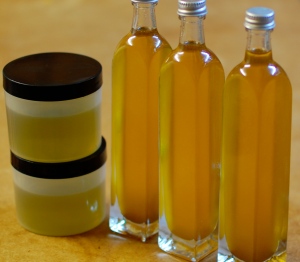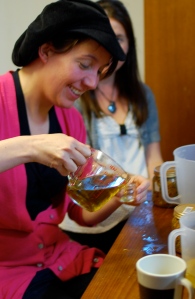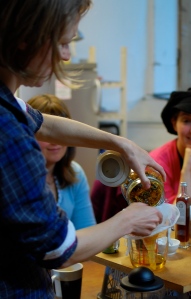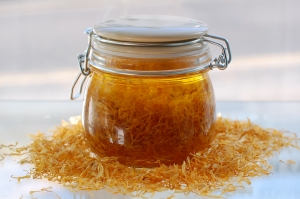Rosemary is one of the first herbs I grew to love as a child as well as one of the first herbs I grew as a plant as an adult. My parents had a magnificent rosemary bush outside their bedroom window and though at that time I only knew it as a culinary herb, I always admired its vitality and endurance, qualities which this beautiful plant lends us in abundance when we start to work with her regularly. Despite being native to the Mediterranean it grows well here, given a sunny, freely draining soil and it particularly enjoys coastal areas, the first word of its botanical name, Rosmarinus officinalis, means dew of the sea.
In my mind rosemary is primarily a rejuvenating herb. It is famous for stimulating memory and concentration, it promotes hair growth when used internally or externally, it contains powerful antioxidants which protect the whole body from ageing, it strengthens capillaries, improves digestion and is thought to ignite the passions. According to Banckes’ Herbal 1525, ’Smell it oft and it shall keep thee youngly.’
Best known as a warming circulatory stimulant, rosemary’s diffusive nature is lovely for getting the blood moving to the peripheries and hence is great for those with cold hands and feet like myself. It can be used internally as tincture or tea for this purpose or externally as an infused oil, bath or footbath herb or an essential oil rub. It can also be of benefit for those suffering from headaches where the cause is constriction in the muscles or the blood vessels supplying the head. Its ability to stimulate blood flow make it first rate in the treatment and prevention of chilblains, I especially like it combined with black pepper for this purpose.
It is helpful for the digestion in several ways. Being aromatic it helps to stimulate the appetite and its warming nature helps stoke the digestive fires, known as the ‘Agni’ in Ayurveda, helping people who suffer with poor assimilation, bloating, gas and undigested food in their stools. Being slightly bitter it’s also beneficial for the liver, a property more closely associated with cooling rather than warming herbs, however rosemary’s warmth helps move stuck energy, particularly in patterns where there is ‘heat’ in the liver but within a cold constitution and where there is also poor digestion.
Rosemary is also useful as a wash for minor wounds as it contains antimicrobial volatile oils and tannins, which help check bleeding. According to Anne McIntyre, nurses used to brew rosemary tea as an antiseptic to sterilise instruments, clean the delivery room and protect both mother and child from infections.
Most will be able to tolerate it well as a tea in the winter months but care must be taken in summer or in tincture form for those with a hot constitution. It is lovely for those floaty, ungrounded, thin, cold and anxious types but a little care must also be taken where these qualities manifest in a person who also suffers from dryness (dry skin, dry cough, constipation etc) as rosemary is both warming and drying in its action. In these cases I would usually teem it with something more moistening. It is equally fabulous for people who are cold, damp, stodgy and overweight and who need a bit of a kick to get moving. It benefits many cold, damp conditions like a phlegmy cough, catarrh and blocked sinuses too.
For those hotter people it combines beautifully with lemon balm, especially where depression or low moods are a factor. Being a stimulating, solar herb rosemary can lift the spirits and encourage motivation and joie de vivre and being strengthening and grounding it helps dispel stress and anxiety.
Rosemary helps us fully embody who we are, lends us strength and endurance, both emotionally and physically, and helps us attain a clarity of mind and lightness of heart which many could benefit from in these stressful times.
I love rosemary in teas, my favourite being the rosemary and lemon balm combination which I drink regularly at this time of year and in early spring before the days have started warming and when my spirits need a lift. In the coldest months of winter I like my rosemary with orange peel and ginger and at the end of a long day I enjoy it with either chamomile or lemon verbena which makes a beautiful relaxing yet clarifying blend.
Rosemary infused oil is one of my favourites for tired aching muscles or joints. I make a lovely massage oil of rosemary, chamomile and St. John’s wort infused oils for back aches.
I love rosemary essential oil too and use it in my aches and pains balm and in the bath with other suitable oils. I’m making some lovely bath oils for christmas presents this year which contain rosemary essential oil among other things. Pop back in a few days when I’ll be sharing the recipe in another post on herbal christmas presents for the November blog party hosted by Brigitte.
References:
The Complete Floral Healer – Anne McIntyre
The Practice of Traditional Western Herbalism – Matthew Wood
Medical Herbalism – David Hoffman









